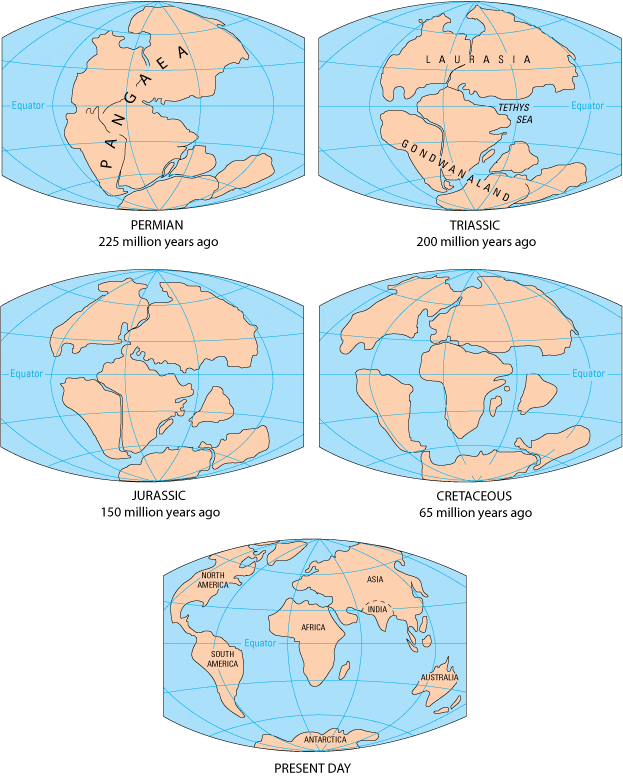Evidence of the Continental Drift Theory
Wegener justified his Theory of Continental Drift based on several types of evidence:
Geographical evidence
Wegener observed that continents, such as Africa and South America, could have been united in the past, as the shapes of their coasts seem to fit together. If the continents were part of Pangea, it is logical that their fragments fit together. The coincidence is greater if instead of the coasts, we try to coincide the continental shelves.
Geological evidence
Wegener observed that some geological formations continued on both sides of the Atlantic. They were the same age and types of rocks, so he believed they would have been attached. For example, the existence of diamonds in Brazil and South Africa.
Paleontological evidence
Wegener discovered that fossils of the same species were found on continents that are now separated. Even some of them were terrestrial like reptiles and plants, so it was not possible that they could have crossed the ocean. This is yet another proof that the continents were united in Pangea millions of years ago.
By Osvaldocangaspadilla (Own work) [Public domain or Public domain], via Wikimedia Commons
Paleoclimatic evidence
Wegener used some sedimentary rocks as indicators of the climates in which they originate, such as tillites in a glacial climate, gypsum and halite in an arid climate, or coal in a tropical climate. He drew a map of ancient climates and observed that they could not have occurred on the continents at current positions.
Geomagnetic evidence
When a magnetic mineral crystallizes, it is oriented toward the north pole, just like a compass needle does. Magnetic minerals that make up rocks of the same age should point to the north pole but indicate different directions, so it seems clear that they have moved. If we move the continents to their original position, these minerals would point towards a single pole.

By Users Heron, Kevin Saff on en.wikipedia [Public domain], via Wikimedia Commons
Test: Continental drift.
Game: Pangea puzzle.


